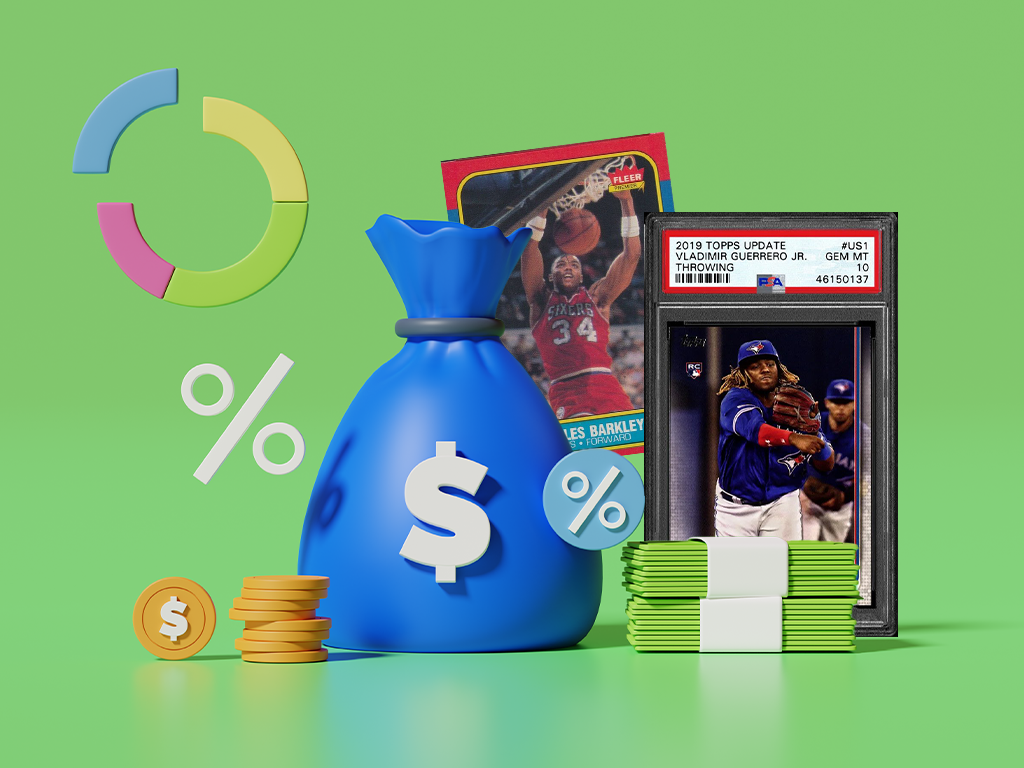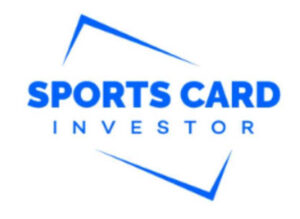
6 Sports Card Hobby Tax Questions Answered By An Expert
While the majority of sports card enthusiasts focus their time on collecting, the hobby’s recent surge in popularity has brought with it a massive number of new people using the hobby as a source of income.
From flippers and breakers to new shops and stores, there are more hobby-related businesses than ever. And while tax code around traditional businesses like card shops isn’t as difficult to navigate, the hobby’s heavy use of online payment platforms like PayPal and Venmo can make the path to filing taxes complicated for many.
Here are answers to six of the most common hobby-related tax questions from a licensed CPA:
1. What is the best way to set up my business, and do I need to set up an LLC?
Before we dive into this question, it’s important to take a step back and discuss the nuance of liability and tax business structures. The primary purpose of establishing an LLC is to limit the exposure of personal assets to the liabilities that can arise from a business. In other words, the main function of an LLC is to protect your personal assets.
As for tax implications, forming an LLC is not necessary to function as a business and file your taxes. For example, if you buy and sell on eBay and get a 1099-k for $25,000, you would file a profit and loss statement on the Schedule C, deduct your expenses, and pay tax on the net profit. In this scenario, you function very similar to an LLC, with the primary difference being liability protection. Since there is a monetary cost to form the LLC and there can be other regulatory requirements, creating one may not be necessary for every business owner in the first year of business. For that reason, I usually recommend waiting a year so you can analyze the data and make an informed decision with your accountant as to what is the best course of action.
Going back to the original question, for tax purposes, you can form your business in a few different ways. The most common is a Sole Proprietor, which requires no registration with the IRS or state, and is filed with your personal 1040. If you created an LLC, then you can file as a single member LLC, which requires registration with the IRS and state, and is also filed on your personal 1040. You can also set yourself up as an “S-Corporation”, which requires you to register with the IRS and the state, and is filed as a separate business tax return (Form 1120s) from your personal return and is useful for saving money on self-employment taxes.
If you have partners in your business, then you could elect to form a partnership, which requires you to register with the IRS, but not with the state, and is also filed as a separate business tax return (Form 1065) from your personal tax return.
In my opinion, the best universal advice I can give to anyone involved in buying or selling sports cards is to talk with a professional that is familiar with retail and inventory-based businesses and have them inform you of the options and the pros and cons of each legal and tax structure.
Remember, you are the decision maker, and ultimately the one responsible for filing and paying the taxes, and the CPA’s job is strictly to be the guide to assist you with making informed decisions.
2. What is the proper way to handle Paypal, Venmo and Cash App?
I think this is one of the biggest areas that CPAs can struggle with in the modern age of collectible retailers. These online payment platforms can create headaches when you are trying to do bookkeeping for taxes at the end of the year. To make it very simple, in order to do bookkeeping for a business, you need to input the business bank statements (income/expenses) into a bookkeeping software and categorize each transaction as to where it will appear on your income statement. It gets complicated if you use an online payment platform to receive payment for a sale and then use that balance to fund a purchase. Since the sale and purchase never hit the bank statement, the only way to track those transactions would be to go through your entire transaction history and find each of those specific types of transactions, which can be very time consuming.
Since I am also heavily involved in the sports card market, I promote two simple rules to my clients that make both of our lives much easier. First, never keep a balance on any of the platforms – once you make a sale and the funds are available, instantly transfer to your bank account. Second, always fund purchases with your business bank account or your credit card, meaning never use the platform’s balance to fund transactions.
If you follow these two simple rules, then you will make sure that every sale and purchase always hits your bank account, and you will be able to track sales and expenses in a much more organized manner. In a worst-case scenario, if you ever have to explain yourself to an IRS auditor, you can simply show them your bank statements and tell them all of your sales and expenses are run through the bank account. This will make their job much easier, since you will be organized and easier to track and verify, which is always beneficial for the taxpayer.
3. What type of inventory tracking should I be using for my business?
For my own business, I use a simple excel spreadsheet that I update on a daily basis when I make a sale or purchase. The most challenging part was getting the sheet started, but once I had the list completed it was very easy to maintain it moving forward.
For example, when I go to a card show and make a trade or a sale, I will either take a picture or text myself the details of the transaction. After the show is over, I go through my pictures and texts to update my inventory list that evening. It usually takes 10 to 15 minutes to update, but it keeps you organized and gives key insight into the true cost of your inventory. One of the biggest mistakes I see with new businesses is they don’t know the true cost of their inventory. If you don’t know your cost, how can you know your sales price, your gross profit margin, or if you are even profitable as a business? The simple answer is that you can’t, so for that reason alone, inventory cost tracking is extremely important.
In addition to the benefit of cost tracking, you will also have to provide an ending inventory list to your accountant to determine your cost of goods sold. Remember, it’s not as simple as sales minus purchases equals gross profit. The correct formula is sales less cost of goods sold equals net profit, and the reason for that is in the name itself. You have to determine what the cost is for only the items you sold, not the items you purchased throughout the year. The formula for cost of goods sold is beginning inventory plus purchases less ending inventory, which is why you will need a year-end ending inventory balance for your CPA to do your taxes. Needless to say, this can have a huge impact on your profit, so it’s another reason why putting in the 10 to 15 minutes of daily maintenance to keep track of inventory cost is extremely important.
4. How can I utilize my expenses to make more money?
Believe it or not, you can use your expenses to earn non-taxable income. I am a huge proponent of using travel and rewards credit cards to earn status at hotels and airlines, as well as rewards for your personal travel. For example, I use a Citi Platinum American Airlines credit card to fund my purchases for sports cards. It is important to note, never carry a balance or pay interest, and pay off the balance as soon as you make the purchase. By using this card to fund my purchases, I earned the highest status on American Airlines, where I get better prices on flights, free checked bags, and complimentary first class upgrades when available, which is always great.
In addition to the benefits of status, you also earn rewards to use as a credit for flights. Remember, you want to pay for business travel to card shows, as these are all deductible expenses and are paid with pre-tax money, and you want to save your reward points for personal travel that would be paid with after-tax money. In other words, when you go on a personal vacation, you have to use money that you have already paid taxes on, whereas you could use your points and save that money and travel for free. There is a strategy that is involved to properly utilize your credit card rewards, but when you are buying a lot of inventory and have a lot of expenses, learning how to maximize the benefits of your spending is only going to increase your bottom line.
5. Do I have a Sports Card Hobby or Business?
Let’s start with the most basic answer to this question: Did you receive a 1099-k from eBay, PayPal or Venmo? If you did, then the answer is you 100% have a business and have to file for tax purposes. If you did not receive a 1099, then the answer is a little more complicated. In the Internal Revenue Code, there is the hobby exclusion clause, which states if you take a loss in three consecutive years, then you do not have a business – you have a hobby and they will disallow the loss. Conversely, if you are buying and selling sports cards and making a profit, then you also have a business and need to file for tax purposes.
The best advice I can give to anyone who asks this question is to get organized and track your sales, purchases, and other expenses. If you’re participating in the hobby on a small scale, it should not be too difficult to stay on top of it, and you can create good habits from the early stages of your business. Once you have a good system in place and are tracking everything appropriately, you will be able to more accurately answer if you have a hobby or a business.
6. How do I determine the cost of inventory that I have had for without any real records of my purchases?
Nothing better illustrates the importance of keeping a well-maintained list of inventory costs than when someone asks this question. It is extremely hard to build a list from scratch, but it is possible if you are willing to put the time in to do it properly. The first step is to make a full list of every item that you have on hand. With this said, if you are doing sets or have several items of the same card, you only need one line item for those – you should create your list on how you plan to sell your items. For example, if you have a 1986 Fleer Basketball set to sell as a full set, then you should put your cost of the set as one line item, instead of breaking out and listing each individual card.
The overall point of the exercise is not to create an insane amount of work for you to do, but rather create a list that gives you useful data and is easy to maintain. Every client that I work with has a different method that works for them. We customized a system to best suit their needs and the time constraints they have for maintaining it. The most important thing to remember is to create a system that works best for you, takes the least amount of time, but also gives you the most useful data.
Adam Goldstein is a licensed CPA in New Jersey and Pennsylvania and is Accredited in Business Valuation (ABV) through the AICPA. He graduated from Temple University in 2011 with a degree in Accounting and Legal Studies.
Adam grew up in the card industry collecting sports cards and runs his own accounting firm, AG Consulting. He currently lives in New Jersey with his wife and three kids.
With the Sports Card Investor app, you can profit from the hobby you love by keeping up with trending cards, tracking real-time prices with Market Movers and buying items on eBay. Download the industry-leading app here for Apple or Android
Note to readers: If you purchase something through one of our affiliates, we may earn a commission.





